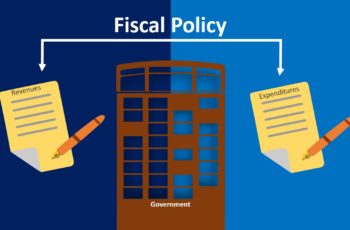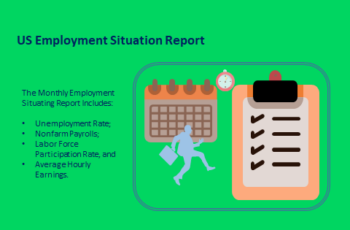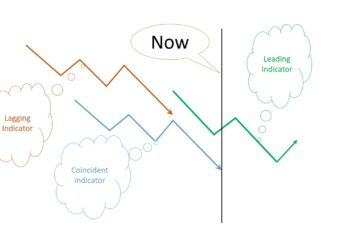Balance of trade (BOT) refers to the difference between imports and exports value. Every country needs to trade, and none is self-dependent. It is measured between one country and all other countries or between two countries.
Generally, the balance of trade includes services. However, it depends on the country. Some countries even prepare separate reports for goods trade balance and services trade balance.
In math language, the trade balance formula is:
Trade balance = exports – imports
It is impossible to equalize always the import and export. So, a difference exists between the amount sold to other countries and the amount bought. Based on the difference between exports and imports, there are three situations, and they are:
1. Equilibrium Balance of Trade (BOT)
An equilibrium BOT refers to trading activities between one country and all other trading partners when the value of imports equals exports.
The equilibrium balance of trade is better than the deficit. However, it is less favored than the surplus.
Keeping a balance is difficult due to changes in population, industries, raw materials, culture, and more.
2. Surplus Balance of Trade
When a country’s export value in the monetary volume exceeds its imports, it has a surplus balance of trade.
Countries favor a surplus balance of trade because it helps accumulate foreign exchange, pay their national debt, or fund a project essential to the citizens.
Keeping a surplus BOT is also difficult for countries with unstable currencies, governments, etc. A continuous surplus balance of trade requires confidence in the system, expertise, stability, and so forth.
Some countries, such as China and South Korea consistently export more than what they import.
Investors and officials also pay attention to the balance of trade between two countries. For example, the USA is importing from China more than it exports to China.
3. Deficit Balance of Trade
The trade balance is a deficit when a country’s imports exceed exports. For example trade balance of the USA is negative.
Tradingeconomics.com consistently updates BOT by country. It is free. Click here to see.
Factors that Impact Balance of Trade
Some factors impact exports and imports from nature to human resources. Whatever influence the import and exports, influence the balance of trade.
And these factors define what goods a nation imports and export.
Moreover, trade wars and politics play roles in trade activities between countries.
Here are some factors that directly impact the monetary value of exports and imports.
1. Comparative Advantage
A country has a comparative advantage if it produces a product at a lower cost than the trading partner.
Examples of comparative advantages are cheap labor costs, a developed system, developed technology, or raw materials.
A country can improve its comparative advantage by improving human resources skills or discovering natural resources.
2. Currency Strength
A country with weak currency produces cheaper goods than trading partners. On the other hand, a strong currency’s purchasing power is higher, having the ability to purchase a higher amount of goods.
The exchange rate of a currency fluctuates due to economic activities or politicians deciding to weaken it.
A currency loses value if the home country fails to export enough. Or politicians intentionally decide to diminish its value to boost exports by printing money or lowering the interest rate, for example.
3. Tariffs on Imports
Tariffs are taxes on imported goods. It directly impacts the balance of trade.
Each product has a specific tariff rate. For example, raw materials have a lower tariff rate, and finished goods have a higher tariff rate.
A country levies a tariff rate based on trade agreements or unilaterally. Changing tariffs on listed goods in a trade agreement is not easy without consequences. However, imposing a higher tariff on other goods is somehow easier.
A higher tariff rate decreases imports because it makes foreign goods more expensive than domestic goods. Inversely, a lower tariff increase imports.
Tariffs of trading partner impacts exports. A higher tariff rate by foreign countries makes domestic goods more expensive and unattractive. On the other hand, a lower tariff by trading partners makes domestic goods cheaper and boost exports.
4. Trade Agreements
A trade agreement between two countries is a promise to minimize trade barriers or trade freely without tax tariffs.
Countries agree to trade without tariffs or charge less because all sides benefit from the trade agreement, and both sides will increase the living standard in their countries.
A trade agreement benefits both parties, reducing the unemployment rate, encouraging innovation, cutting trade costs, etc. However, both sides may not benefit equally impacting the balance of trade.
5. Subsidies
A subsidy is the government’s help for some industries to keep their output prices lower.
Beneficiaries of subsidies can be individuals or businesses.
However, to boost exports, governments pay subsidies to export companies. The subsidy might be paying exporters or manufacturers of goods meant for export.
Differences Between Balance of Trade (BOT) and Balance of Payment (BOP)
They seem similar. And they are somehow.
Balance of trade is part of the balance of payment.
balance of payment contains the balance of trade and other financial transactions between countries.
The following chart explains those differences.
| Number | Balance of Trade | Balance of Payment |
|---|---|---|
| 1 | In some countries, BOT only counts value of goods traded | BOP counts value of both goods and services |
| 2 | The BOP does not count capital flows. For example, investment in bonds and stock markets does not have any place in the BOT | BOP counts capital flows. For example, if a foreigner purchases domestic bonds, the money that he pays and the bond that he owns are counted |
| 3 | BOT is narrow. It does not represent the true economic international relations | BOP contains every international transaction. Thus, BOP represents true economic international relations |
| 4 | From an accounting perspective, BOT can be in equilibrium, surplus, or deficit positions | In the balance of payment, the two sides always tally |
How Does the Balance of Trade Impact the Exchange Rate?
Trade directly influences the demand for a currency.
Exports increase demand for domestic currency. And imports decrease the demand for home currency.
A surplus in trade increases a currency price, and a negative balance decreases.
How?
Let us explain with an example.
Assume that you are American (Or you are). And you want to buy a package of t-shirts from China worth one million dollars. First, you pay the producer one million dollars. Second, because the producer pays for salary and raw materials in Yuan, he exchanges your dollars for Chinese currency. Even though you paid USD, the demand for the home currency of the t-shirt producers increased.
According to economics, demand increases the price. So, your demand for Chinese t-shirts increased the demand for Yuan.
You are not alone. Thousands of traders buy from China.
You and other traders combined, increase the deficit trade balance with China. And these trading activities increase the Chinese currency exchange rate.
Trade alone does not impact the exchange rate. Dozens of factors, such as interest rate, inflation, political stability and decision, and capital flows define the true exchange rate. That is why it is hard to predict the exchange rate for tomorrow or next month.






